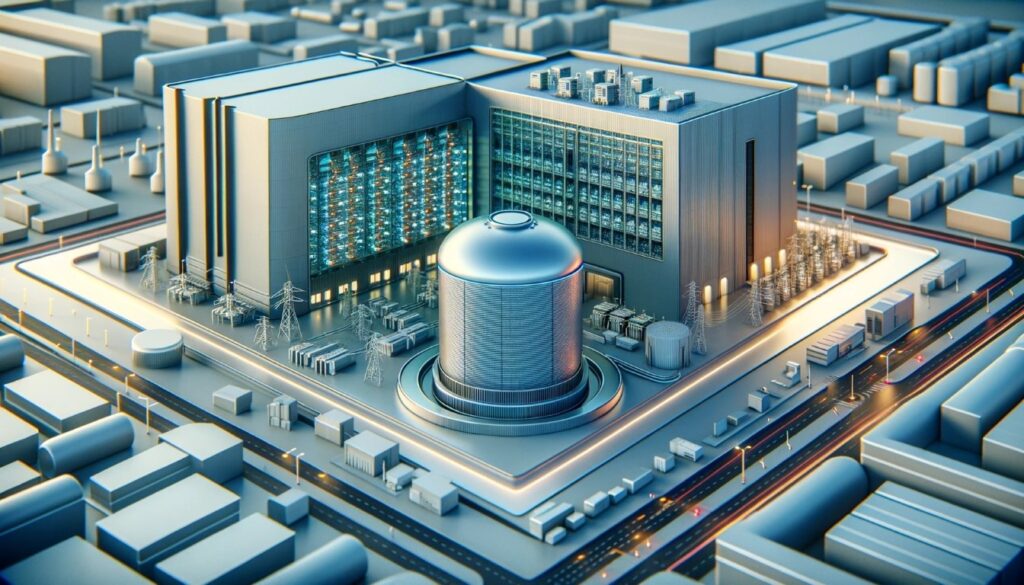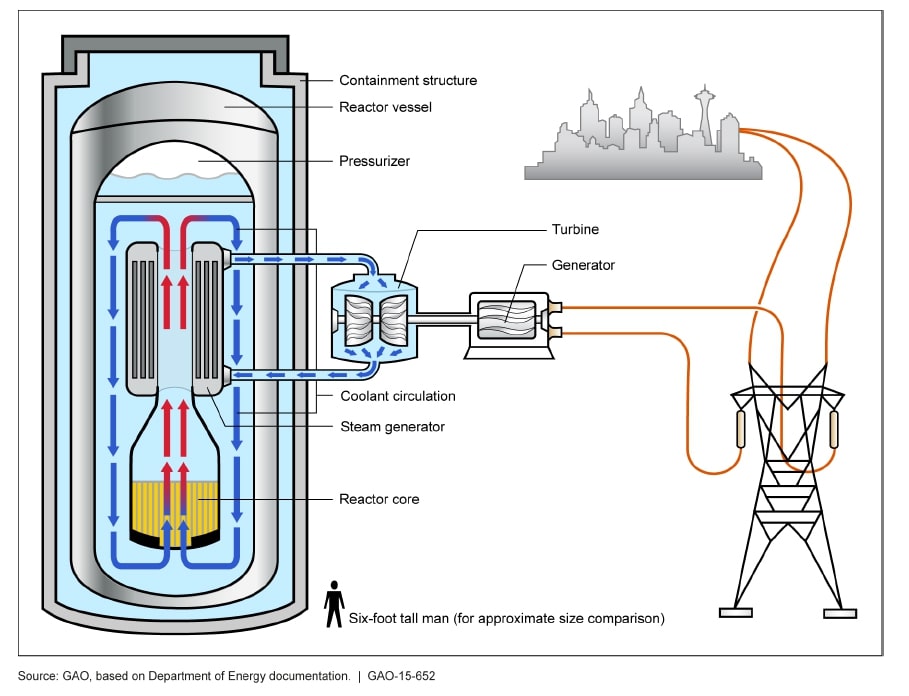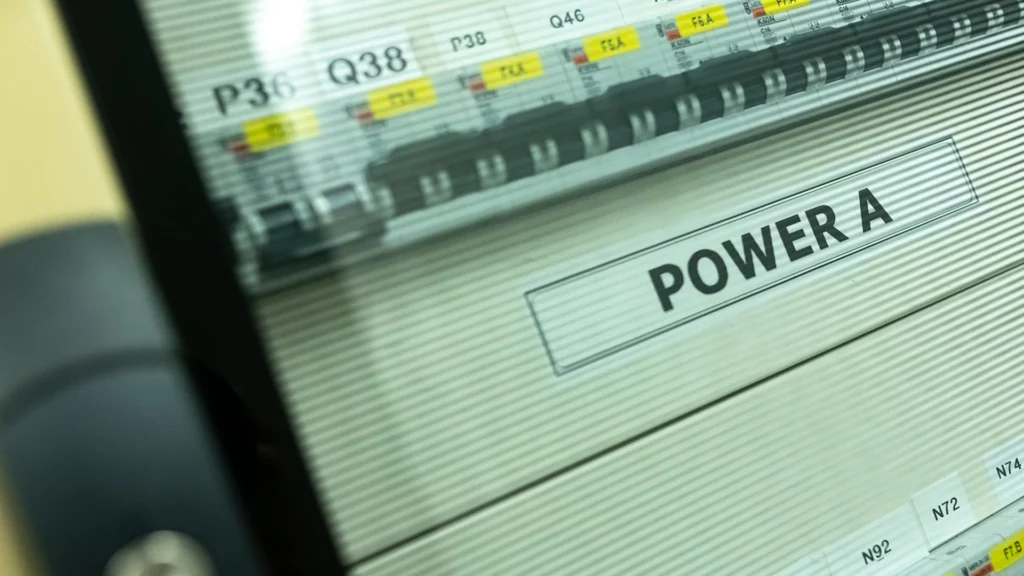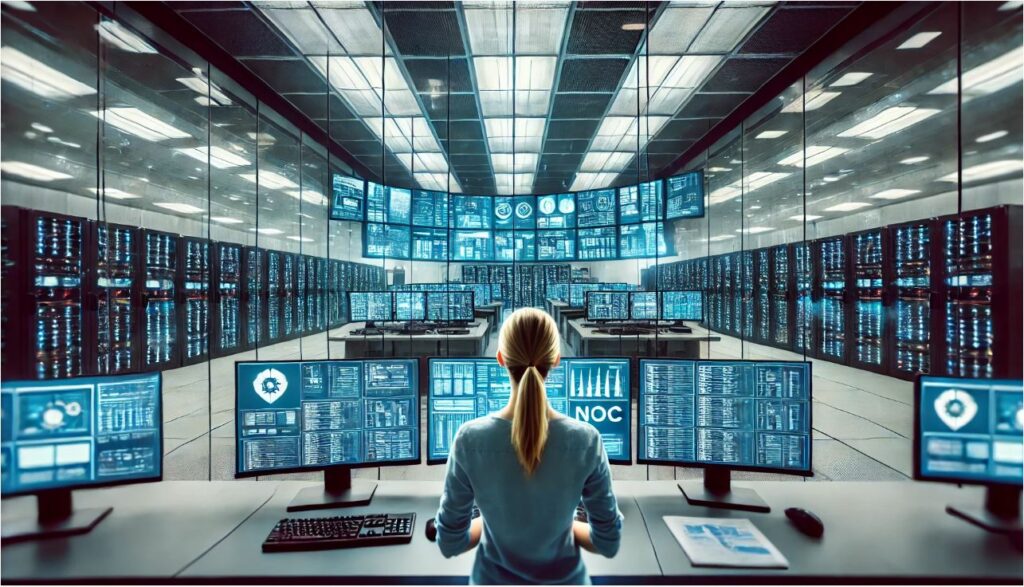Powering the future: can Small Modular Reactors support data center energy needs?

Data centers face a dual challenge in energy management: meeting escalating demands while reducing environmental impact. Data centers need to actively reduce their energy consumption and carbon emissions to move towards a more sustainable future. The quest for a reliable, non-stop energy supply to ensure customer satisfaction and uptime adds another layer to this already complex puzzle.
The balancing act has become even more critical with the AI-driven surge in computational needs. The computational intensity required to train and use AI models surpasses traditional computing by a considerable margin, straining our existing energy infrastructure.
Global data center electricity consumption already accounts for 1-1.3% of total demand, according to the International Energy Agency (IEA), which is why finding a sustainable, reliable energy source is paramount. Many alternative energy sources are being considered, but some say the solution might be nuclear, in the form of small nuclear power plants.
Entering the arena: Small Modular Reactors (SMRs)
Enter Small Modular Reactors (SMRs), defined by the International Atomic Energy Agency (IAEA) as “advanced nuclear reactors that have a power capacity of up to 300 MW(e) per unit, which is about one-third of the generating capacity of traditional nuclear power reactors.” Unlike their larger counterparts, SMRs are designed for simplicity, offering a substantial yet low-carbon power output, which makes them particularly appealing for a variety of applications, from powering distant towns, to powering data centers.
The journey of commercial SMRs began at Oregon State University (OSU), where the first one was designed by a team of nuclear scientists in 2007. Building on OSU’s prototype, NuScale Power developed the first working model, which has since been given the green light by the Office of Nuclear Energy in the United States.
While there are currently no SMRs in commercial operation around the world, the IAEA says many member states are focusing on the development of SMRs. It is estimated that there are more than 80 SMR designs and concepts globally. Most of them are in various developmental stages, but some are claimed as being near-term deployable. Both public and private institutions are actively participating in efforts to bring SMR technology to fruition within this decade.
Russia’s Akademik Lomonosov, the world’s first floating nuclear power plant that began operation in May 2020, is producing energy from two 35 MW(e) SMRs. Other SMRs are under construction or in the licensing stage in Argentina, Canada, China, Russia, South Korea, and the United States of America.
Benefits of SMRs for Data Centers:
In the shadow of major nuclear incidents like Chernobyl and Fukushima with their lasting impact, much of the public considers nuclear power as a significant risk.
However, the IAEA states that SMRs pose far less risk because of their smaller size, simpler design, and inherent safety characteristics, such as low power and operating pressure. In such cases no human intervention or external power force is required to shut the systems down, because they rely on physical phenomena, such as natural circulation, convection, gravity, and self-pressurisation. In case of an incident, SMR safety features eliminate or significantly lower the potential for unsafe releases of radioactivity to the environment and the public.
Other possible benefits include:
- Sustainability: SMRs will not emit carbon or other atmospheric pollutants during the power generation process, aligning with the industry’s sustainability goals. This makes them a worthy partner for wind and solar energy, which are more dependent on weather conditions. As opposed to classic reactors where it’s too cumbersome to turn them on and off, with an SMR you could tailor the production to match the need for power.
- Reliability: SMRs provide a continuous power supply, essential for 24/7 uptime required by modern data centers, as they can adjust output according to demand. Some renewable energy sources, such as wind and solar, are variable because they depend on weather conditions and time of day.
- Scalability and space efficiency: Their modular nature allows for tailored energy output and compact size fits locations unsuitable for larger plants. Because of their modular nature, some parts can be assembled in a factory and then moved, saving time and construction costs.
- Fuel efficiency: SMRs require less frequent refuelling compared to traditional nuclear plants, reducing operational interruptions, and limiting risks. It’s more efficient fuel consumption also means less nuclear waste compared to traditional plants.
Many voices consider SMRs and nuclear power in general a viable way forward. The consideration of nuclear power is also supported, which may come as a surprise to some, by the Intergovernmental Panel on Climate Change (IPCC). Their main activity is the preparation of reports assessing the state of knowledge of climate change. In their 2023 AR6 synthesis report, they describe nuclear power as a source with very low CO2 emissions per kWh, meaning low ecological impact, but also low land occupation and low material use. For a decrease in carbon emissions, it’s a far better choice than fossil fuels. But is it the best option? That depends on many factors, including some concerning ones.

Challenges and Concerns
Despite their benefits and many vendors hoping to launch their designs in this decade, SMRs face hurdles:
- Regulatory and public perception: Navigating regulatory frameworks and shifting public opinion, wary due to past nuclear incidents, poses significant challenges.
- Time and availability: Most SMRs are still in developmental or licensing stages, with a realistic operational timeline not expected until the end of this decade. SMRs won’t be widely available in the near future, while the rise of AI is very much happening right now.
- Cost: Initial costs and comparison to renewable energy sources remain contentious. Critics like Doug Parr, chief scientist at Greenpeace UK, argue that SMRs might not offer a cost-effective solution compared to renewables. For example, Cost-related withdrawals by several towns involved ended a Nuscale SMR project in Utah.
- Nuclear waste: Even though the produced nuclear waste will be much less than that of a traditional plant, it can’t be eliminated completely. Countries will need to include spent fuel from SMRs in their nuclear waste management programs.
A fleeting trend or sustainable future?
Critics claim that the hype of SMR will fade away as difficulties arise, while other see it as the best way forward. Hard to say who will be right in the end, but the trajectory of SMR development is noteworthy.
Fact of the matter is that a big global player like Microsoft listed a recruitment notice for a “Principal Program Manager, Nuclear Technology, who will be responsible for maturing and implementing a global Small Modular Reactor (SMR) and microreactor energy strategy.” Its founder Bill Gates – writer of ‘How to avoid a climate disaster’- is also banking on SMRs by being Chairman of the Board at Terrapower, a nuclear innovation company. The global effort in SMR development, illustrated by projects in countries like Argentina, Canada, The United States and South Korea, reflects a broad interest in this technology’s potential.
As the global community leans towards more sustainable and reliable energy solutions, SMRs stand out as an avenue worth exploring. The ongoing research, dialogue among stakeholders, and forthcoming technological advancements will be key in determining whether SMRs will play a part in the data centers of tomorrow.





Responses